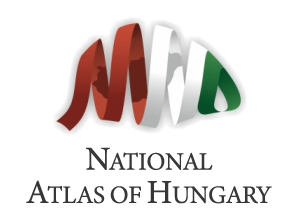Definition
A national atlas is a series of maps usually accompanied by textual explanations and targeted at citizens and interested foreign readers. The maps show, in detail, the natural, economic and social conditions of a country. A national atlas follows a logical and balanced structure of maps with relatively uniform cartographic execution in defined scales. The Soviet-Russian geographer-cartographer, K. A. Sališčev, who was the first president of the Commission on National and Regional Atlases of the International Geographical Union (IGU) between 1956 and 1972, and the president of the International Cartographic Association (ICA) between 1968 and 1972, stated the following: “National atlases are large and comprehensive atlases of individual countries, which summarize and evaluate the natural, economic and political-geographical knowledge for a given country.”1 “National atlases are atlases that show the spatial characteristics of the natural environment, population, economy and culture of a specific country, and they are published as products of national importance and prestige by state or public institutions.”2 F. Ormeling, who later became president of the ICA, summed up the various definitions as follows: “A national atlas portrays the detailed and differentiated image of the geographical attributes of a country in a defined sequence of maps.”3
Characteristics
The major common characteristics of national atlases published until now are as follows:
- the topics refer to the area of a specific country,
- a sequence of logically arranged maps portrays the natural, social and economic spatial structure of a country with its space-time characteristics in an almost encyclopaedic way,
- the themes are represented in main maps and auxiliary maps of defined uniform scales so that the maps can be compared; the scale is partly defined by the shape of the country,
- main topics are a) state and country (general geography, history, politics), b) natural environment, c) population and society, d) economy,
- national atlases are everywhere initiated by the state, and their publication and financing is considered a state task.
In relation to the last statement, it can be stated that a national atlas has always been an “identity card” of a specific country and nation; it is one of the most important national symbols just like the flag, coat of arms and national anthem.
Requirements and objectives
Several important requirements have evolved with regard to national atlases. A national atlas must serve and support
- the representation of a state, nation,
- the planning and decision-making tasks of administration,
- scientific research,
- public and higher education,
- and the interests of educated and general readers by its clarity.
Basic types
V. E. Žukovskiy defined two basic types of national atlases based on requirements and objectives4:
1. scientific-informative: for a narrow range of professionals (e.g. the latest Chinese and Russian atlases),
2. popular-scientific: for a wide range of interested readers (e.g. the latest German, Spanish, Swedish and Slovenian atlases).
_____________
1 Sališčev, K. 1960. Nationalatlanten. Vorschläge zu ihrer Vervolkommung. Petermanns Geographische Mitteilungen 104/1. p. 77.
2 Салищев, К. А. 1976. Картоведение, МГУ, Москва, 240. p.
3 Ormeling, F. 1994. Neue Formen, Konzepte und Strukturen von Nationalatlanten. Kartographische Nachrichten 44. 6. pp. 219-226.
4 Жуковский, В. Е. 2008-2009. Что такое Национальный атлас? История Национального атласа.

